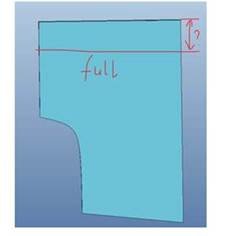albinalaska
Veteran Member
- Joined
- Jun 6, 2020
- Messages
- 94
- Location
- USA
- Vessel Name
- Sea Gypsy
- Vessel Make
- 1979 Albin Trawler 36'
Good morning,
We're working with KUS-USA to order some tank sensors but they keep saying they are missing information. I've sent a handful of emails to them back and forth and have gotten nowhere so I'm appealing to anyones experience in this matter for help!
KUS keeps asking us to "please mark the full level position and send back a revised file". I assumed the tank was full when the water reached the top of the object but apparently I'm sorely mistaken.
When I asked the company for clarification on what they mean or how best to add that mark for them they suggested I try to google tank designs and see what I come up with. Google has been a bottomless pit that has got me nowhere.
Any thoughts on what KUS means or how to send this information back to them? Is this "Full level" something I need to program into the design file in Fusion 360 for their 3D software to read or is it as simple as drawing on the image as they have below? Side note - it's odd the company won't clarify this for me directly but I have zero prior experience with this process and perhaps have offended them greatly in asking such novice questions.
I thank you kindly for any suggestions or assistance!
> I've attached the file they keep sending back to me.
We're working with KUS-USA to order some tank sensors but they keep saying they are missing information. I've sent a handful of emails to them back and forth and have gotten nowhere so I'm appealing to anyones experience in this matter for help!
KUS keeps asking us to "please mark the full level position and send back a revised file". I assumed the tank was full when the water reached the top of the object but apparently I'm sorely mistaken.
When I asked the company for clarification on what they mean or how best to add that mark for them they suggested I try to google tank designs and see what I come up with. Google has been a bottomless pit that has got me nowhere.
Any thoughts on what KUS means or how to send this information back to them? Is this "Full level" something I need to program into the design file in Fusion 360 for their 3D software to read or is it as simple as drawing on the image as they have below? Side note - it's odd the company won't clarify this for me directly but I have zero prior experience with this process and perhaps have offended them greatly in asking such novice questions.
I thank you kindly for any suggestions or assistance!
> I've attached the file they keep sending back to me.
Attachments
Last edited:

